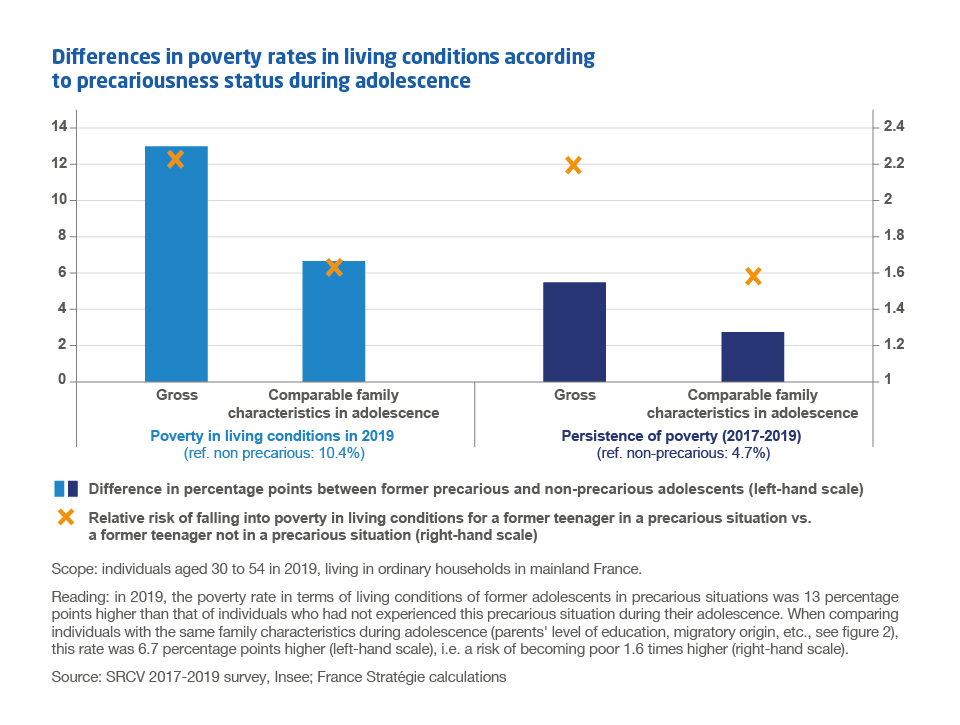Once adults (which we restrict in the study to the 30 to 54 age group), their characteristics are on average much less favourable than those who have not experienced precariousness. This unfavourable situation is found in terms of standard of living, although there is some heterogeneity in the trajectories: while nearly one out of three former adolescents in precarious situations has a standard of living in the lowest 20% when they reach adulthood, about 30% of them are in the highest 40%.
In 2019, almost one out of four precarious former teenagers who have become adults is considered to be poor 'in terms of living conditions', as opposed to approximately one out of ten of non-precarious former teenagers, i.e. the risk of poverty is 2.25 times higher. Given a comparable family environment during adolescence (parents' level of education, migrant background, type of household, etc.), the risk of poverty remains 1.6 times higher. The penalty associated with having experienced 'precarious adolescence' is of the same scale in terms of chronic poverty, measured by remaining poor in terms of living conditions for three years in a row. The reproduction of poverty is more marked for women: as a result, a woman who experienced precariousness as a teenager is 1.9 times more likely to be living in poverty as an adult than a woman who did not experience this situation.
Differences in educational pathways between poor and non-poor teenagers account for some of these differences. Assuming a comparable family environment during adolescence, former adolescents in precarious situations are slightly more than 1.5 times more likely to leave school without a qualification. Among women, the reproduction of poverty can also be explained by differences in family structures in adulthood. For a comparable family environment during adolescence, former teenage girls living in poverty are 1.4 times more likely to live in a single-parent household in adulthood.




